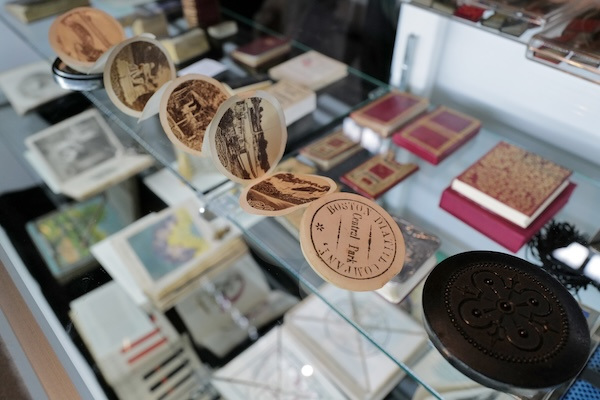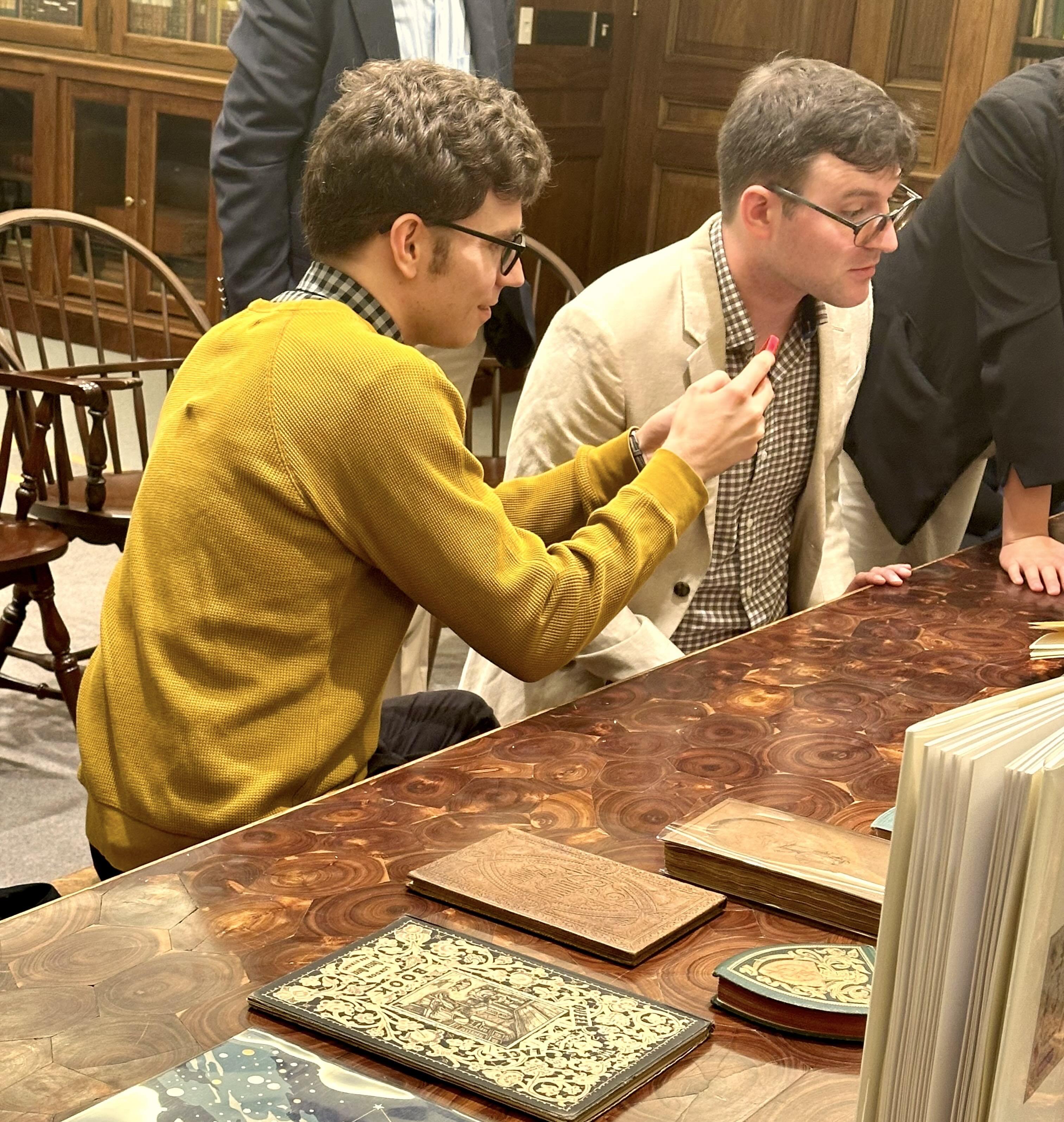National Collegiate Book Collecting Contest
The NCBCC recognizes outstanding book collecting efforts by college and university students. The program aims to encourage young collectors to become accomplished bibliophiles. More.

"Book-collecting is at once the most various, the most sophisticated, and the least income-taxing of the major forms of connoisseurship." - John Carter, in Books and Book-Collectors
by Allen and Patricia Ahearn
Book collectors start as readers. This may seem obvious, but is important to keep in mind, for the majority of book collectors collect authors or subjects that they are currently reading or have read and enjoyed. In fact, perhaps “enjoyed” is really not descriptive enough. Collectors do not just enjoy these books; they feel an affinity with the author and admire the author as one of the best in the field. The author expresses the collector’s thoughts and inchoate insights and expresses them in ways the collector would if he or she had the talent, or takes him or her to a time and place the collector is interested in or to a setting that removes the collector from his or her current world and cares. More.
The value of a particular copy of any given book is impacted by many factors: condition, binding, provenance, and the significance of any inscriptions it may contain. The evaluation of manuscript material, including letters and signatures of well-known people, involves further considerations.
Read more FAQ's about the ABAA and by sellers and buyers of books.

The NCBCC recognizes outstanding book collecting efforts by college and university students. The program aims to encourage young collectors to become accomplished bibliophiles. More.
Reference works are the 'tools' of the Antiquarian Book Trade. Ideally, they represent years of research & scholarship which delineate an authoritative view of a given subject, be it author, genre or specific topic, such as the Civil War. Bibliographies, a sub-set of reference works, provide information on the books, and other publications, that comprise an author's oeuvre, or a subject's breadth, or the works contained in whatever spectrum the bibliographer has defined. For more about them and a list of useful bibliographies and reference books, read more.
This abbreviated glossary covers only the most commonly encountered terms. There may be exceptions to some of our definitions - our main concern is to provide you with general concepts relative to commonly used book jargon. Abbreviations appear alphabetized at the beginning of each respective letter; only the most common abbreviations are included.
The aim of this document is to suggest some “best practices” for ABAA members in cataloguing and selling culturally sensitive material.
The recommendations have been composed in the spirit of continuing education, drawing together input from fellow members, scholars, and librarians. Its authors will continue to seek advice from the rare book community, particularly from those who are members of marginalized or oppressed groups. It is meant to be an evolving resource, adapting over time to the many ways we find ourselves facing the complex issues encountered when handling sensitive material. It makes no pretense at being the final authority on these issues, nor is it comprehensive in its scope. Insofar as it makes any claims, it is that engaging with culturally sensitive material in such a way that ensures the dignity of the community or communities involved is necessary, important work, and that we will all be better cataloguers for doing it. More.
Click here for additional bibliographic resources.